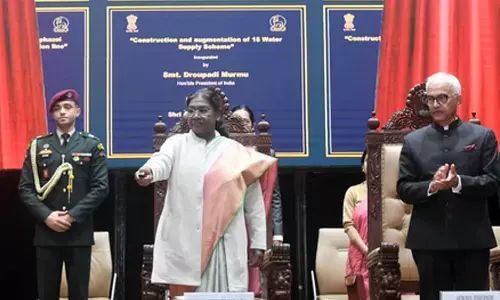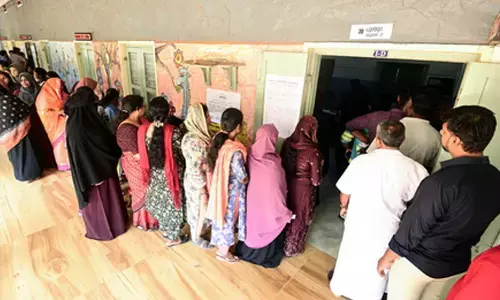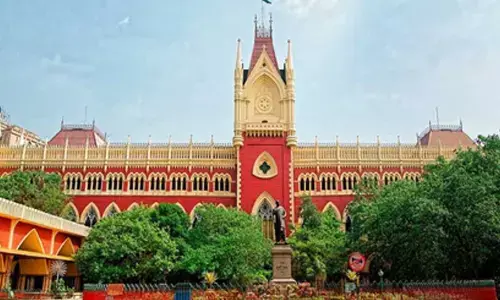Harnessing the potentiality of the Food Processing Units to Generate Employment in the Uttara Andhra Needs Commitment
Out of 10 million populations inhabiting Srikakulam, Vijayanagaram and Vishakhapatnam, 73 in Srikakulam, 80 in Vijayanagaram, and 94 in Vishakhapatnam are 18 60 old and they are capable of work and earn a living Rural workforce constitutes more than 50 in all three districts
Out of 10 million populations inhabiting Srikakulam, Vijayanagaram and Vishakhapatnam, 73% in Srikakulam, 80% in Vijayanagaram, and 94% in Vishakhapatnam are 18- 60 old and they are capable of work and earn a living. Rural workforce constitutes more than 50% in all three districts. However, as many as 20 lakh people have migrated in search of livelihoodfrom Srikakulam and Vijayanagaram alone since late 90s for obvious reasons like low rate of infrastructure development, lack of rural industries, low agricultural yields due to lack of irrigation and credit facilities. This can be reverted if the available resources at hand are utilized properly.
What could be done to stop the labor migration?
Andhra Pradesh possesses several geographical and climatic advantages to nurture agriculture based food processing industries in the state as it is a leading agriculture and horticultural producer in the country, followed by dairy, poultry, and fisheries. From 14. 91% in 2016-17, the productivity in the agriculture and the allied sector’s grew by 17.76% in 2017-18, contributing 163635 crore to the national economy. This is 3% higher than the previous year’s growth. The industrial sector is lagging behind agriculture & allied sectors and the agricultural sector is only next to the service sector in the state in its contribution to the state GDP.
Contribution of Agriculture & Allied sector to the Andhra Pradesh Economy 2017-18
| Sector
| GVA in crores | Growth rate in (%) |
| Agriculture | 30901 | 12.30 |
| Horticulture | 42462 | 17.16 |
| Agri+ Horti | 73363 | 15.06 |
| Livestock | 47376 | 13.05 |
| Forestry | 2336 | 1.97 |
| Fishing | 40559 | 30.84 |
| Agri & Allied | 163635 | 17. 76 |
Source: Government of AP
Andhra Pradesh, with bountiful natural resources, can engage its workforce in food processing units as it is a major employment and income generator in the state.
Primary Agricultural Crop production in India & AP 2017-18
| Sr. No | Crop | Area in Hc | Productivity in Million Mt Tons in India | Productivity in AP tones/Hc | Rank in India |
| 1 | Paddy | 2.58 | 13.91 | 3.3 | 3 |
| 2 | Ground Nut | 1.18 | 1.23 | 0.9 | 16 |
| 3 | Maize | 0.35 | 5.30 | 78.4 | 1 |
| 4 | Sugar Cane | 0.16 | 15.57 | 78.4 | 5 |
Source: Government of AP
The above table clearly places AP in top position in the agricultural production in the country. Food processing units based on the rice, sugar cane, groundnuts and maize can employ at least 5000 in flour mills, sugar cane and oil mills in each district as edible oil from the rice bran and groundnut are consumed domestically. Sugarcane by products including sugar, jaggery, distilleries, molasses that can be used in alcohol, fertilizers and bio-fuel production can absorb the labor force in huge numbers.
However, if we cross-check the reality, major sugar cane, rice and jute mills that were functioning in the three districts of Uttara Andhra for decades in cooperative sector have collapsed and the mills that have traditionally employed at least 5000 members in each unit have lost their jobs. The government must mediate with the mill owners by offering incentives in reviving the existing non-functional units in the state. Jute mills at Rajaam, district of Srikakulam, Asia’s the largest jaggery market in Anakapalli of Vishakhapatnam district are facing challenges; while the jaggery is facing tough competition from Uttar Pradesh and Bihar, jute mills are facing power and labor crisis.
The government of Andhra Pradesh must take measures to protect the traditional job markets in the state by investing on infrastructure building. It should also fix better prices, and offer proper marketing and distribution channels. Several cottage and small scale industries can be setup to prepare rice flakes, corn flakes, edible oil, eatable snacks from ground nuts, vermicelli, noodles and other instant food production. This sector can employ 50000 families in Uttara Andhra. The government should allocate 2000 crore for credits, building logistics like roads, water and power supply, cold storage and warehouse facilities.
Horticultural Production in India & AP’s position in 2017-18
| Fruits & Vegetables | Area in Hc | Production in India | AP’s share | Rank of AP |
| Mango | 0.3 | 2.73 | 9 | 5 |
| Papaya | 0.02 | 1.55 | 80 | 2 |
| Lime/Lemon | 0.02 | 0.35 | 15 | 3 |
| Tomato | 0.16 | 3.36 | 20 | 6 |
| Cashew | 0.08 | 0.56 | 6.8 | 5 |
| Coconut | 0.12 | 1829 millions | 8.94 | 6 |
| Banana | 0.09 | 3.16 | 35 | 6 |
| Onion | 0.05 | 1.0 | 18 | 5 |
.
Source: Government of AP
The table mentioned above clearly establishes the potentiality of Andhra Pradesh in horticultural production in the year 2017-18. The agricultural, horticultural, plantation and forest based herbal products can be used extensively to promote food processing units that can produce nutritional products for sale including papads, pickles, fruit jellies, jams, juices, fruit essence, and chips (banana, tapioca & Potato) .
The contribution of Horticultural Plantations of the three Northern AP Districts 2017-18
| Districts | Net GVA | Banana | Cashewnut | Mango | Coconut | Chillies | Oil Palm | Turmeric | Tomato |
| Srikakulam | Rs. 1004 Crores | Rs. 237 Crores (23.59%) | Rs. 208 Crores (20.71%) | Rs. 160 Crores (15.93%) | Rs. 89 Crores (8.82%) | Rs. 78 Crores (7.74%) | ---- | ---- | ---- |
| Vizianagaram | Rs. 2100 Crores | Rs. 900 Crores (42.86%) | Rs. 125 Crores (5.95%) | Rs. 677 Crores (32.26%) | ---- | ---- | Rs.126 Crores (6.02%) | ---- | ---- |
| Vishakhapatnam | Rs. 1793 Crores | Rs. 149 Crores (8.33%) | Rs. 213 Crores. (11.90%) | Rs. 263 Crores (14.68%) | ---- | ---- | Rs. 77 Crores (4.30%) | Rs. 370 Crores (20.61%) | Rs. 52 Crores (2.89%) |
Source Ministry of Agriculture, Govt of AP
The Northern AP districts are major contributors to the horticultural production in the state; While Vijayanagaram district is known for vegetable gardens, Srikakulam is famous for cashew, coconut, Drumstick, Tamarind, Jack fruit and banana. Fruits like pine apple, custard apple and coffee found in the agency areas of Vishakhapatnam can be exploited thoroughly in establishing nourishing products as they are rich in fiber content. Coconut fiber can be used to setup coir and carpet industry. Coconut oil and the flowers grown extensively in these regions can be used in making cosmetics and bath soaps and should be branded as ‘Uttrandhra homemade products & cosmetics.’
By constructing cold storage plants, it is possible to promote fruits and vegetable exports from this region. The Vijayanagaram district as whole is known for agro and farm based products; the Mango jelly industry centered in and around the Jaami region has tremendous potentiality and demand in the country. Its status must be upgraded to the level of food industries to expand the market in other parts of the country.
Horticultural, dairy and livestock available in this region can be processed to promote bakeries, sweets and confectionary makers, restaurants, supermarkets and food courts. Sugarcanes can be used to make organic jaggery, processed sugar and candies. Strawberries can be grown in the elevated tribal regions of Araku and Paderu regions of Vishakhapatnam district, which can be processed for domestic and international market. The natural beauty of the agency areas along with its world renowned Coffee gardens can promote tourism and employment in this region. Tamarind and drumstick available in plenty in these regions can be processed to sell in the retail and wholesale market. Coconut, Cashew processing units should be encouraged by setting special economic zones in these districts. This demands the commitment of the central and the state governments in the form of investment up to 2,000 crore in the next 10 years to create 100,000 jobs.
Apart from generating employment, the sugar cane and jute mills of Northern Andhra region can produce organic and ecofriendly food and utility material. Ecofriendly jute bags for example can be used to replace plastic bags. Jute fiber can be used to prepare fashionable vanity bags, school bags, decorative pieces, wall hangings, packing and interior decoration material. We need appropriate textile policy with subsidies to protect and promote the local talent. Government of India should encourage jute by providing 2000 crore support for a period of 10 years. Through this 50,000 direct jibs can be generated.
Sad part of Andhra Pradesh fishing Industry is skilled manpower are migrating to other states like Gujarat. At least 30,000 highly skilled fishermen from Northern Andhra are serving as the real backbone to the Gujarat’s 14,000 Crore fishing Industry today. Despite holding a vast 320 KMs of sea shore, the skilled fisherman are migrating because they are not able to buy fishing boats and very few could afford to rent fishing boats. Chemical and pharma indusries placed in UttaraAndhra are destroying the fishes and because of this fishermen has to go atealst 10 KM deep see to do fishing and also fishermen are unable to get fair prices as they are exploited by the middlemen. The government should come to the rescue of the fishermen by offering credit to buy boats. With less than 10,000 crore budget over a period of 10 years on building cold storage and other logistics and by fixing appropriate prices to their catch it is possible to promote domestic and global market for the marine products of this area to create 100,000 jobs in the Fishing industry of Uttara Andhra.
Apart from the industrial parks for the revival of food processing units, the government should set-up turmeric, coconut, tamarind and cashew boards that can assure a reliable price for the farmers, along with other benefits like skill development, credit facilities, distribution and taping the potentiality of the domestic and export markets. If possible need to create separate branding for seasonal fruits “Uttara Andhra Nutritional Rich Seasonal Fruits” Vast sea shore is one of the biggest natural assets for AP to promote tourism and salt cultivation. As per my observation as of now salt cultivating formers are leasing their lands to companies as they are unable to get right price. We should educate the next generation formers (sons) and explore the possibility to sell the salt online, if required government should initiate a common platform like “Uttara Andhra Uppu” and sell it online by providing subsidy.
Qualified local youth should be employed in all the service oriented jobs and labor intensified units must be reserved for the small, marginal farmers and land less labor. Local women, youth and the skilled workforce must be encouraged to take-up small medium scale and cottage industries, to set up food processing units as most of the brands that are flocking our supermarkets with the brand names like ‘Priya pickles’ ‘Haldiram’, Nirma, Lijjatpapads, and Amul have started as cottage industries that have gradually carved a niche in the domestic and international markets. Special Uttara Andhra Food Processing Economic Zone Units to protect small, medium and the cottage industries is the need of the hour and it demands the commitment of the central and the state governments at least 1,000 crore for a period of 10 years to create 100,000 jobs.
The Girijan Cooperative Corporation (GCC) has identified 30 medicinal plants in Uttara Andhra that can be used to prepare medicines to treat diseases like asthma, cough, chronic bronchitis, psychiatric problems, depression, memory loss, infertility, ulcers, sore eyes, epilepsy, leprosy, cardiac disorders, hair growth, snake bite, malaria, abdominal and uterus disorders, skin diseases, hysteria, nerves disorders and a host of health related problems. GCC should be expanded to sell fruits and vegetable nutritional rich and exclusively available fruits like pine apple, jackfruit, banana, custard apple and pineapple. These are seasonal fruits available in Uttara Andhra forests and hills. All these fruits can be branded as “Uttara Andhra Nutritional Fruits” and should be marketed online and offline. This task demands the commitment of the central and the state governments at least 1,000 crore for a period of 10 years to create 10,000 exclusive jobs to students from the tribal communities.
UttaraAndhra needs ecofriendly industrialization mentioned above and pollution oriented pharma, nuclear and thermal plants should be discouraged to stall labor migration from Uttara Andhra region.
Dr Srinubabu Gedela has completed Ph D from Andhra University and Post-doctorate from Stanford University. The research work is part of Pulsus Group CSR activity

















